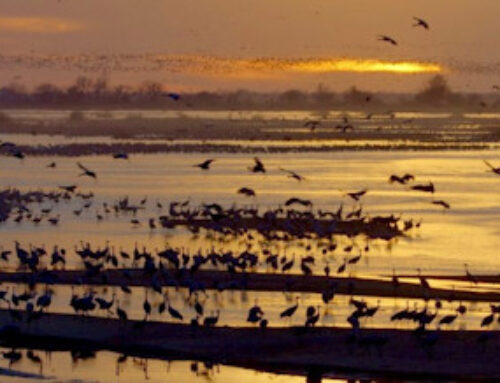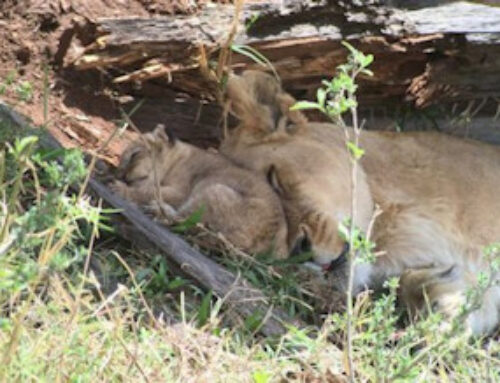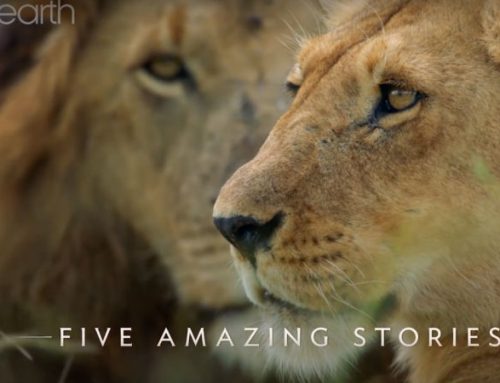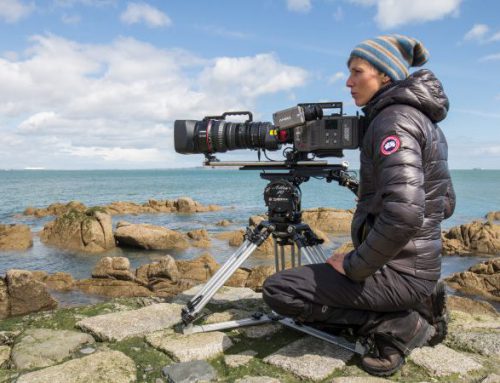NewsShooter.com was set up by Dan Chung and Matt Allard in 2009. It’s a site dedicated to the use of large sensor cameras and DSLRs for news, documentary and factual shooting & is an excellent resource for any of us in the industry. Many years ago I volunteered on the Guardian’s photo desk and always looked forward to seeing Dan’s work, It’s great to be a guest contributor on the site.
Here’s the piece: Here’s what we all know, ARRI’s Amira is a camera firmly aimed at the documentary/news market. The ergonomics for shoulder use look superb, however being a wildlife camera operator I rarely shoot ‘blue chip’ in this way and therefore put it straight on a Ronford Baker ‘Atlas 30’ tripod head, stuck a Canon HJ18 on the front of it, and went filming animals from a 4×4 in Kenya.
I’ve just spent the last few weeks filming for a new landmark BBC Natural History Unit series ‘One Planet’. The team had a wealth of cameras including RED’s Carbon Dragon Epic and an (now) ancient Phantom Gold. Sue Gibson, one of the camera operators on our team secured an ARRI Amira premium version to test and I spent a happy afternoon putting it through its paces. This was by no means an in depth test but will hopefully give a brief insight as to how the Amira performed in the field as experienced by a wildlife camera operator.
The OLED electronic viewfinder (EVF) was bright, clear and easy to focus as long as I maintained a consistent distance with my eye pressed firmly against it – as you would if working off the shoulder. The minute I moved my eye away however (which is often when waiting for wildlife to be wild because you spend much of your time scanning) the image appeared to waver and became difficult to look at. I hear these issues are being addressed by Arri.
I’m left eyed and the Amira doesn’t cater for that. The infrared proximity sensor automatically deactivates the viewfinder’s internal OLED when you withdraw your eye, if you’re left eyed it doesn’t ‘see’ you and turns off, a piece of tape is a quick fix and again I hear that ARRI are aware of the problem.
The foldable LCD screen is easy to use and great for reviewing rushes and adjusting menu settings. A waveform monitor would be a useful addition. There is currently no tally light out of SDI for monitoring, which is not so useful if you’ve got a Director along who wants to know when you’re running.
As mentioned we were using the Amira with long lenses from a vehicle and the user buttons would have been better placed for us if they were closer to the focusing hand (not on the side of the camera) however those using it on the shoulder will find them well placed. The ND filter selector would benefit from having a higher profile as it’s quite difficult to locate (when operating) and the filters felt a tad over engineered in the field, although they seem to have hit the right increments .6, 1.2 and 2.1 (please note the Sony F55 with its not so useful .9 & 1.8) For ease of use the soft keys on the viewfinder could also have been slightly more tactile and identifiable by touch.
One thing that caught the team out was the break in recording when one of the CFast 2.0 flash memory cards becomes full. The Amira doesn’t automatically switch over to the second slot. It would be extremely useful if CARD FULL was flagged very obviously in the viewfinder so you don’t carry on thinking you’re capturing a superb lion hunt and find that oh dear… luckily this didn’t happen to us but I can imagine it might in the heat of the moment.
A pre-roll recording buffer for us is a no brainer and we are all looking forward to it in the upcoming 1.1 software update. Also the ability to use an external trigger/zoom demand along the lines of a Libec for operating from a pan handle would be a happy addition.
The great news is that the plus sides of the Amira are many. Being able to shoot 200 fps without having to drag out a Phantom is a huge plus for wildlife, playback looked smooth & we were all very impressed with the results – although without seeing properly graded rushes I can’t give you a full technical write up.
The Amira is robust, light, fast to start up, doesn’t have a fan that scares animals for miles (please note that point RED) and the presets are a doddle and fast/easy to switch between (Sony please note on your F55). The power consumption is excellent and the camera body isn’t black and therefore survives better in the heat. It would be rude not to mention the dynamic range, which is outstanding – we couldn’t push it hard enough which says something.
Finally it really lives up to ARRI’s design ethos, a proper camera operator’s camera. In short, it’s a tasty camera that I hope to be asked to shoot on more, however at over $51,000 for the Premium package I think many wildlife production companies will be waiting for a 4K version to satisfy the pixel pickers.








